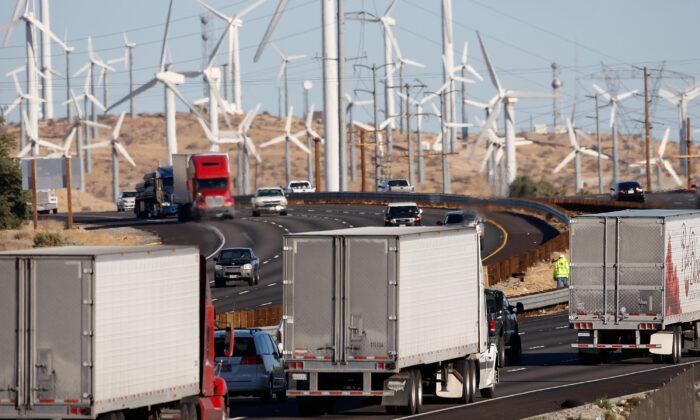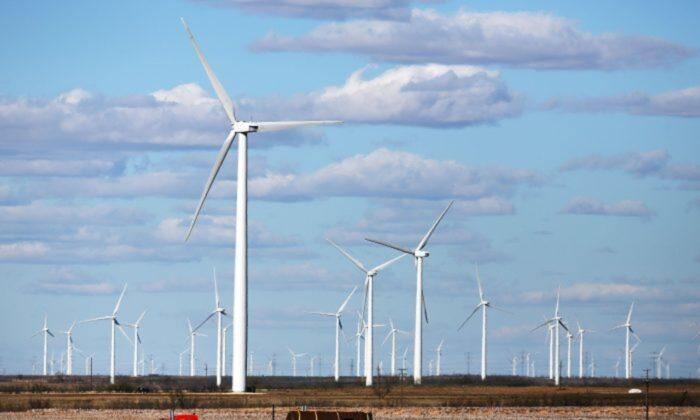“It can’t happen here” is one of the most dangerous sentences you can utter. The comforting conviction, for example, that some other state’s well-publicized blunders would never be adopted by your own elected representatives can turn out to be just another of life’s illusions.
For Virginians, California’s rolling blackouts and sky-high electricity prices may seem like little more than the travails of distant strangers on the other side of the country. But this smugness is misplaced.
California is closer than many Virginians realize.
In the name of combatting climate change, the Golden State is moving rapidly away from carbon-based fossil fuels and mandating ever-increasing amounts of renewable energy. California’s renewable energy mandates—33 percent today, 60 percent by 2030, and 100 percent by 2045—are already having an effect, but it’s not the one its backers in Sacramento promised. Environmental writer Michael Schellenberger points out that California’s electricity rates have risen six times the national average since 2011.
In August, during a seasonal hot spell, large swaths of the state were subjected to rolling blackouts, with officials warning that more are to be expected.
Virginia’s Risky Path
Following the example set by California (in ways lawmakers in Richmond may not have appreciated), the Democratic-controlled General Assembly in 2019 passed the Virginia Clean Energy Act which, among other things, calls on the state’s two largest electric utilities—Dominion Energy and Appalachian Power—to provide electricity solely from renewable sources (wind and solar) by 2045 and 2050, respectively.The new law came on the heels of Democratic Gov. Ralph Northam’s September 2019 executive order to develop at least 2,600 megawatts (MW) of offshore wind power by 2026.
Virginia is a low-wind state; onshore wind facilities there could never produce more than a negligible amount of electricity. Furthermore, any attempt to construct land-based, industrial-scale wind projects in rural Virginia would encounter the same resistance that has sprung up against such facilities elsewhere: concerns about the health effects of the low-frequency noise emanating from the spinning turbines, loss of productive farmland, and anger over the marring of scenic countryside by giant turbines.
The only place where wind is available is off the state’s Atlantic Coast. Coastal Virginia Offshore Wind, which will be designed and operated by Richmond-based Dominion Energy, is estimated to cost $300 million and is scheduled to be in operation in 2026. A smaller 12-MW pilot project is already under construction 27 miles out to sea from Virginia Beach.
The Perils of Intermittency
But as California amply demonstrates, the transition to dependence on intermittent wind and solar is fraught with its own perils, which affect both consumers and the environment.“Experience in Europe over the past decade demonstrates that the performance of offshore wind turbines degrades rapidly—on average, 4.5% per year,” notes the Manhattan Institute’s Jonathan A. Lesser in a recent report, “Out to Sea: The Dismal Economics of Offshore Wind.”
Even though offshore wind blows more consistently than onshore wind, ocean-based turbines still operate at only 50 percent to 58 percent of their capacity, according to the Energy Information Administration. This means that, at best, the giant turbines perform more than 40 percent below their capacity, requiring a backup source of electricity when the wind isn’t cooperating.
The Manhattan Institute’s Lesser notes that the rapid deterioration of offshore wind turbines means higher operating costs and reduced economic lifetimes.
Environmental Degradation
Offshore wind’s alleged environmental benefits also turn out to be illusory. The raw materials needed to manufacture wind turbines (installed on land or at sea) far exceed those needed to manufacture and install gas-fired combined-cycle turbines. Of those raw materials, none is more crucial than rare earths, almost all of which currently come from China, from mines in Mongolia.China’s environmental standards are vastly inferior to those in the West, with little regard for air pollution or the dumping of toxic materials in landfills. This outsourcing of environmental degradation for the sake of green energy is, as British journalist Simon Parry points out, “the deadly and sinister side of the massively profitable rare-earths industry that the ‘green’ companies profiting from the demand for wind turbines would prefer you knew nothing about.”
Like wind, solar power is intermittent and comes with environmental consequences its supporters are loath to acknowledge. What, for example, is to be done with toxic chemical-laden solar panels—whether on rooftops or in sprawling solar “farms”—once they have reached the end of their short (about 10-year) life cycle? Solar, like wind, is subsidized by U.S. taxpayers, but there are no federal regulations governing the disposal of used solar panels, even though they are prone to leakage, in addition to being difficult to recycle.
A recent article in Grist reports that most used solar panels are shipped to developing countries with weak environmental protections, where they are routinely dumped into landfills. The International Renewable Energy Association estimates that in 2016 there were already about 250,000 metric tons of solar panel waste worldwide—and that total will increase to 78 million metric tons by 2050.
There are other ecological costs to solar power. A 2015 study by Stanford University and the Carnegie Institution for Science found that nearly a third of the state’s solar development is occurring on former cropland, where many farmers are shifting from growing crops to using their land to develop solar power—rather than letting it become a wildlife habitat.
California has far more sun and wind than Virginia. Yet not even these favorable environmental conditions have enabled the Golden State to produce enough energy from either source to meet demand. And their intermittency continues to destabilize the state’s fragile power grid.
For a harbinger of their energy future, Virginians need look no further than California. It’s not a pretty picture.





